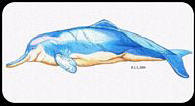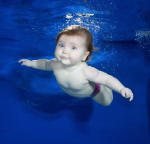
Amazing book by Mark
This page contains links to all species of dolphins river dolphins and porpoises. Please click the link to take you to the dolphin page where you will find more dolphin pictures and information on that dolphin species.
More information can be found at Swimming with Dolphins
Dolphins without Beaks Porpoises Scientific names and families River Dolphins
 |
Atlantic Hump-backed Dolphin |
 |
Atlantic Spotted Dolphin |
 |
Atlantic White-sided Dolphin |
 |
Black Dolphin |
 |
Bottlenose Dolphin |
 |
Commerson’s Dolphin |
 |
Common Dolphin |
 |
Dusky Dolphin |
 |
Frasier’s Dolphin |
 |
Heaviside’s Dolphin |
 |
Hector’s Dolphin |
 |
Hourglass Dolphin |
 |
Indo-Pacific Hump-backed Dolphin |
 |
Irrawaddy Dolphin |
 |
Long-snouted Spinner Dolphin |
 |
Northern Rightwhale Dolphin |
 |
Pacific White-sided Dolphin |
 |
Pantropical Spotted Dolphin |
 |
Peale’s Dolphin |
 |
Risso’s Dolphin |
 |
Rough-toothed Dolphin |
 |
Short-snouted Spinner Dolphin |
 |
Southern Rightwhale Dolphin |
 |
Striped Dolphin |
 |
Tucuzi Dolphin |
 |
White Beaked Dolphin |
 |
Baiji (Yangtze River Dolphin) |
 |
Boto (Amazon River) Dolphin |
 |
Franciscana (La Plata) Dolphin |
 |
Indus and Ganges River Dolphin |
Dolphins without Prominent Beaks
- Tucuxi Commersons Dolphin
- Short-snouted Spinner Dolphin
- Hector’s Dolphin
- Long-snouted Spinner Dolphin
- Heaviside’s Dolphin
- Atlantic Hump-backed
- Black Dolphin
- Atlantic Spotted Dolphin
- Spotted Dolphin
- Hourglass Dolphin
- Pantropica Dolphin
- Dusky Dolphin
- Southern Rightwhale Dolphin
- Peale’s Dolphin
- Common Dolphin
- White-Beaked Dolphin
- Striped Dolphin
- Pacific White-sided Dolphin
- Rough-toothed Dolphin
- Atlantic White-sided Dolphin
- Indo-pacific Hump-backed Dolphin
- Fraser’s Dolphin
- Northern Rightwhale Dolphin
- Irrawaddy Dolphin
- Bottlenose Dolphin
- Risso’s Dolphin
River Dolphins
- Amazon River Dolphin
- Bolivian River Dolphin
- Tucuxi Dolphin
- Ganges River Dolphin
- Indus River Dolphin
- Irrawaddy Dolphin
- Yangtze Finless Porpoise
Porpoises
- Burmeister’s porpoise (Phocoena spinipinnis)
- Dall’s porpoise (Phocoenoides dalli)
- Finless porpoise (Neophocaena phocaenoides)
- Harbor porpoise (Phocoena phocoena)
- Spectacled porpoise (Phocoena dioptrica)
- Vaquita (Phocoena sinus)
Types (Species) of Dolphins
| Family Phocoenidae | Phocoena phocoena | harbour porpoise |
| Phocoena spinipinnis | Burmeister’s porpoise | |
| Phocoena sinus | vaquita | |
| Phocoena dioptrica | spectacled porpoise | |
| Neophocaena phocaenoides | finless porpoise | |
| Phocoenoides dalli | Dall’s porpoise | |
| Family Delphinidae | Steno bredanensis | rough-toothed dolphin |
| Sousa chinensis | Indo-Pacific humpback dolphin | |
| Sousa teuszii | Atlantic humpback dolphin | |
| Sotalia fluviatilis | tucuxi | |
| Lagenorhynchus albirostris | white-beaked dolphin | |
| Lagenorhynchus acutus | Atlantic white-sided dolphin | |
| Lagenorhynchus obscurus | dusky dolphin | |
| Lagenorhynchus obliquidens | Pacific white-sided dolphin | |
| Lagenorhynchus cruciger | hourglass dolphin | |
| Lagenorhynchus australis | Peale’s dolphin | |
| Grampus griseus | Risso’s dolphin | |
| Tursiops truncatus | Common bottlenose dolphin | |
| Tursiops aduncus | Indo-Pacific bottlenose dolphin | |
| Stenella frontalis | Atlantic spotted dolphin | |
| Stenella attenuata | pantropical spotted dolphin | |
| Stenella longirostris | spinner dolphin | |
| Stenella clymene | clymene dolphin | |
| Stenella coeruleoalba | striped dolphin | |
| Delphinus delphis | common dolphin | |
| Delphinus capensis | long-beaked common dolphin | |
| Lagenodelphis hosei | Fraser’s dolphin | |
| Lissodelphis borealis | northern right whale dolphin | |
| Lissodelphis peronii | southern right whale dolphin | |
| Cephalorhynchus commersonii | Commerson’s dolphin | |
| Cephalorhynchus eutropia | Chilean dolphin | |
| Cephalorhynchus heavisidii | Heaviside’s dolphin | |
| Cephalorhynchus hectori | Hector’s dolphin | |
| Peponocephala electra | melon-headed whale | |
| Feresa attenuata | pygmy killer whale | |
| Pseudorca crassidens | false killer whale | |
| Orcinus orca | killer whale | |
| Globicephala melas | long-finned pilot whale | |
| Globicephala macrorhynchus | short-finned pilot whale | |
| Orcaella brevirostris | Irrawaddy dolphin | |
| Family Platanistidae | Platanista gangetica gangetica | South Asian river dolphin |
| Family Pontoporiidae | Pontoporia blainvillei | franciscana |
| Family Lipotidae | Lipotes vexillifer | baiji |
| Family Iniidae | Inia geoffrensis | boto |




 In addition a self-rating measurement of anxiety symptoms the Zung scale found a fall of more than 20% among the dolphin group compared with a decline of 11% among the non-dolphin groups.
In addition a self-rating measurement of anxiety symptoms the Zung scale found a fall of more than 20% among the dolphin group compared with a decline of 11% among the non-dolphin groups. The following information will help parents make an informed choice about taking their baby to a swimming pool
The following information will help parents make an informed choice about taking their baby to a swimming pool



 <————- This is me on holiday in Tenerife 2003.
<————- This is me on holiday in Tenerife 2003. I am married to Dave and have 2 step children Lisa and Lee and 3 grandchildren Immy Logan and Luke.
I am married to Dave and have 2 step children Lisa and Lee and 3 grandchildren Immy Logan and Luke. 
